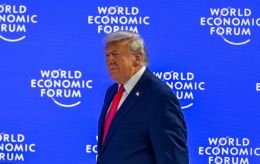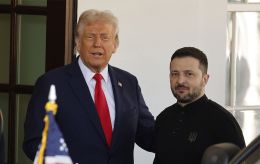Vulnerable spot: How Kursk operation affected frontline and risks for Ukrainian army
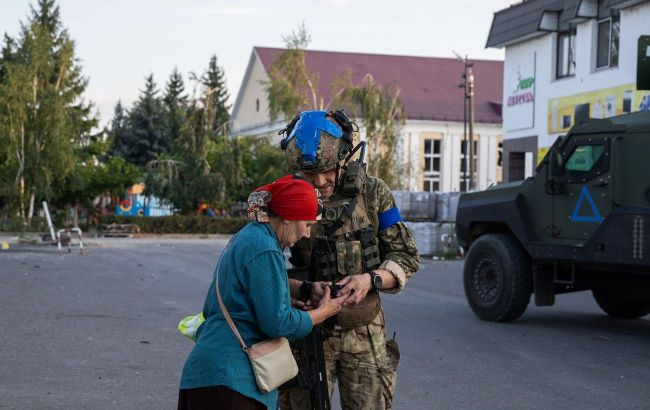 A Ukrainian serviceman and a resident of Sudzha in the Kursk region (photo by Getty Images)
A Ukrainian serviceman and a resident of Sudzha in the Kursk region (photo by Getty Images)
Today marks the one-month anniversary of the start of the Ukrainian Defense Forces' operation in the Kursk region. The breakthrough itself, and even more so its success, was unexpected for many. Read about the results, risks, and whether the Kursk operation will bring peace talks with Russia closer in RBC-Ukraine's article.
Contents
- Month of Kursk operation results
- Risks
- What's next and whether it will be possible to negotiate with Russia
Against the backdrop of Russia's advance in Donbas, the appearance of the Ukrainian Armed Forces in the Kursk region was truly unexpected. The start of the operation was shrouded in the fog of war, and the new direction appeared in the news reports a week later.
Thanks to the surprise effect, the border areas were quickly brought under control. Later, President Volodymyr Zelenskyy would say that the plans were kept strictly secret. Without this, it was hard to expect success.
The Ukrainian side seems to have several objectives: from defeating the Russian Sever group North and forming a security belt to diverting Russian forces from the Donetsk region and replenishing the exchange fund. As for the last point, it has already yielded results: on August 24, an exchange was conducted, from which some of the Russian conscripts captured in the Kursk region have already returned.
The Kursk operation was a necessary measure and a preventive strike, Zelenskyy says. Russia was preparing to attack the Sumy region, and if this had happened, it would have taken a long time to stop it. “To push them out, we need a superiority in people and weapons. It is not a fact that we will have it,” he says.
At the same time, the Kursk breakthrough is only part of a broader plan, the implementation of which should reduce pressure at the front. The lack of long-range weapons forced them to do something unexpected, so that “we, not they, would create a buffer zone.”
Obviously, not all of the stated goals were achieved during the month of fighting. Russia has recovered from the shock and is massing troops for a counteroffensive. The main questions remain whether the Ukrainian army will stay there for long, what risks there may be, and how events will develop.
Month of Kursk operation results
In a relatively short time, the Ukrainian Defense Forces have advanced tens of kilometers inland, taking control of about 1,300 square kilometers of territory and a hundred settlements in several districts of the Kursk region.
The pace has now slowed, but fighting continues along the entire Ukrainian frontline. It is most active on the outskirts of the district center of Korenevo, as well as northwest and northeast of Sudzha. The destruction of bridges across the Seym also suggests plans to take control of part of the border Glushkovo district.
Sudzha, which is a critical gas transportation hub for Russian exports, has been under control almost from the first days. A military administration headed by Ukrainian General Eduard Moskaliov has been established there. Its tasks include protecting residents and providing them with everything they need following international law.
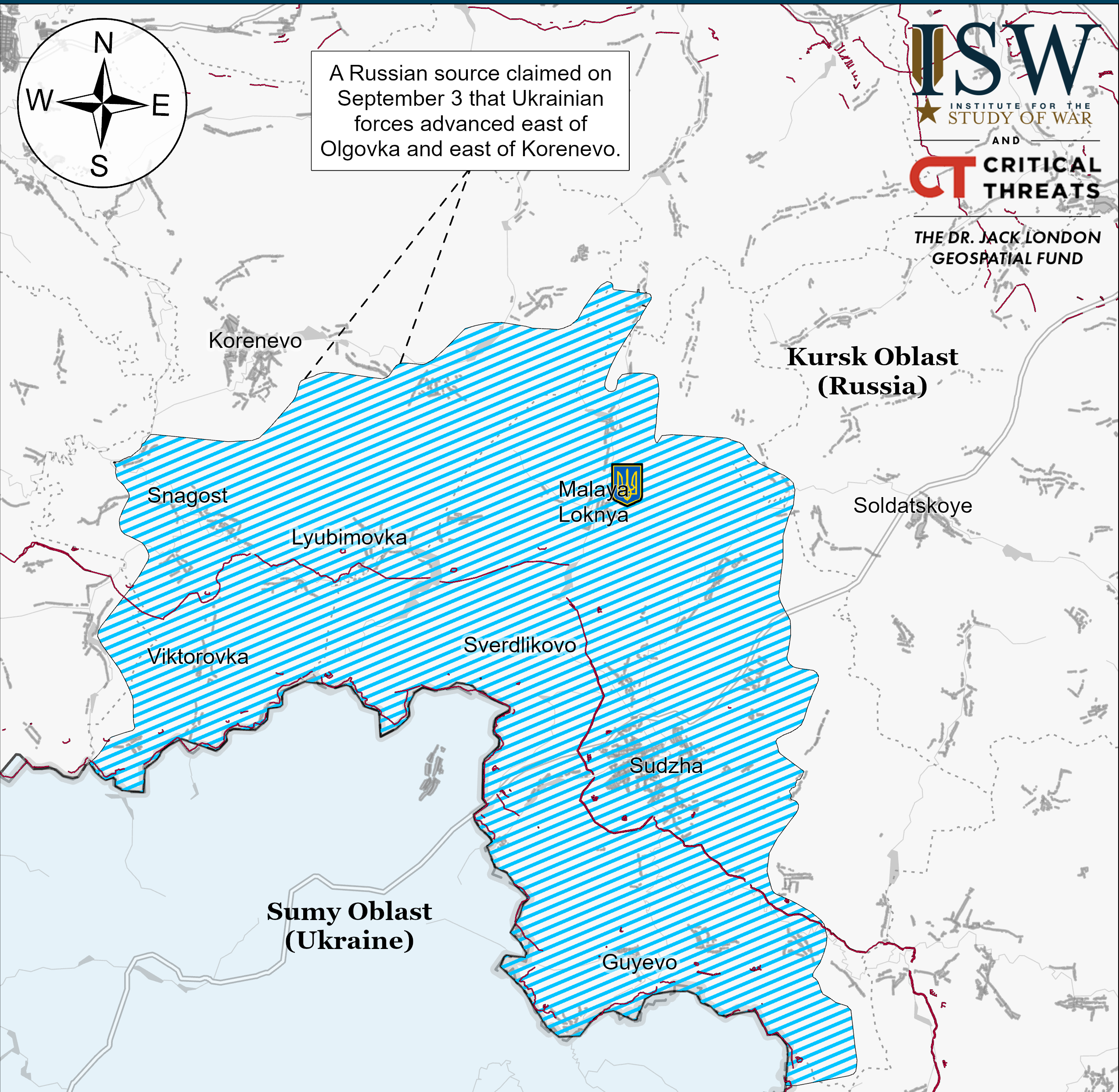 Map of the controlled territories in the Kursk region (photo )
Map of the controlled territories in the Kursk region (photo )
The bold Ukrainian offensive exposed weaknesses in the Russian defense, boosted morale, and put an end to talk of a possible freeze on the front line. In addition, this operation has inspired Western allies and shattered the risk of escalation arguments against giving Ukraine long-range weapons to strike Russia, The Telegraph writes.
The task of the buffer zone has been partially fulfilled, explains a military expert, a former spokesperson for the General Staff of the Armed Forces of Ukraine Colonel Vladyslav Seleznov.
“It's probably too early to say that the residents of Sumy region are already calmer. Because the enemy is using guided aerial bombs and missiles. But the strikes of mortar shells, artillery shells, and the activity of Russian subversive reconnaissance groups have decreased significantly,” he says in an interview with RBC-Ukraine.
The deployment of tens of thousands of Russian troops near Kursk can also be considered a plus. This has led to the fact that they are not performing tasks at the fronts in Ukraine, but are forced to block the expansion of the Ukrainian bridgehead.
“The intensity of fighting in some areas has indeed decreased. Of course, Russia is not yet moving troops from Pokrovsk and Toretsk, but it is withdrawing some resources from auxiliary areas. These are the south of Ukraine, the north in the area of Vovchansk and Lyptsi (Kharkiv region - ed.), and the area of Chasiv Yar in Donetsk region,” Seleznov says.
According to President Zelenskyy, Russia's advantage in artillery reached 12:1. The Kursk operation allowed to divert Russian forces, the situation in the direction of Pokrovsk remains difficult, but the advantage in strikes has decreased to 3:1.
The General Staff of the Armed Forces of Ukraine chose the most rational option and struck at the exact moment and place where the Russian army was most vulnerable, explains Selezniov. In early August, a large Russian group called Sever was concentrated in the border regions. The lion's share - 55,000 - was in Belgorod region, with another 10,000 in Bryansk and Kursk.
“That is, we struck exactly where Russia did not expect it. And thanks to the effective use of engineering equipment, we instantly broke through the first and second lines of defense. Now Russia is beginning to push us back a little, but in a month we have established strongholds in some areas to conduct long-term combat operations. And as long as the Russians try to push the Ukrainian army out, they will suffer even greater losses,” the source explains.
Oleksandr Musiienko, head of the Center for Military and Legal Studies, is confident that the Kursk operation confused Russian plans. “They thought that they would come to a ceasefire sometime in the fall after the battles in the East. But Kursk broke everything, which is annoying and worrying for Putin,” he tells RBC-Ukraine.
In his opinion, there are all prospects that Ukrainian troops will be there for a long time. In addition to offensive actions, there are signs of preparations for defense, especially in the eastern part of the bridgehead. In other words, the Ukrainian Armed Forces are stabilizing the line in anticipation of a possible transition to a regime of holding the territories.
Risks
According to the latest data, the Russians have transferred 60,000 troops from Ukraine alone to Kursk. There are also conscripts from the Moscow and Leningrad districts, Tyumen, the Far East, and other regions. The day before, Vladimir Putin called the ousting of Ukrainian forces a sacred duty, and everything indicates that the Russians will soon go on the offensive.
There is indeed a risk that the Russians will increase their presence in the Kursk region and counterattack the positions of the Ukrainian Armed Forces, Musiienko says. But he emphasizes that Ukraine has been preparing for this.
“Perhaps this is a desirable scenario for us to some extent. Russia doesn't want to admit it, but be that as it may, it is sending some troops, including from the Donetsk region, and there will be more. This is good for us because we will move on to the phase of restraining Russian units,” the expert believes.
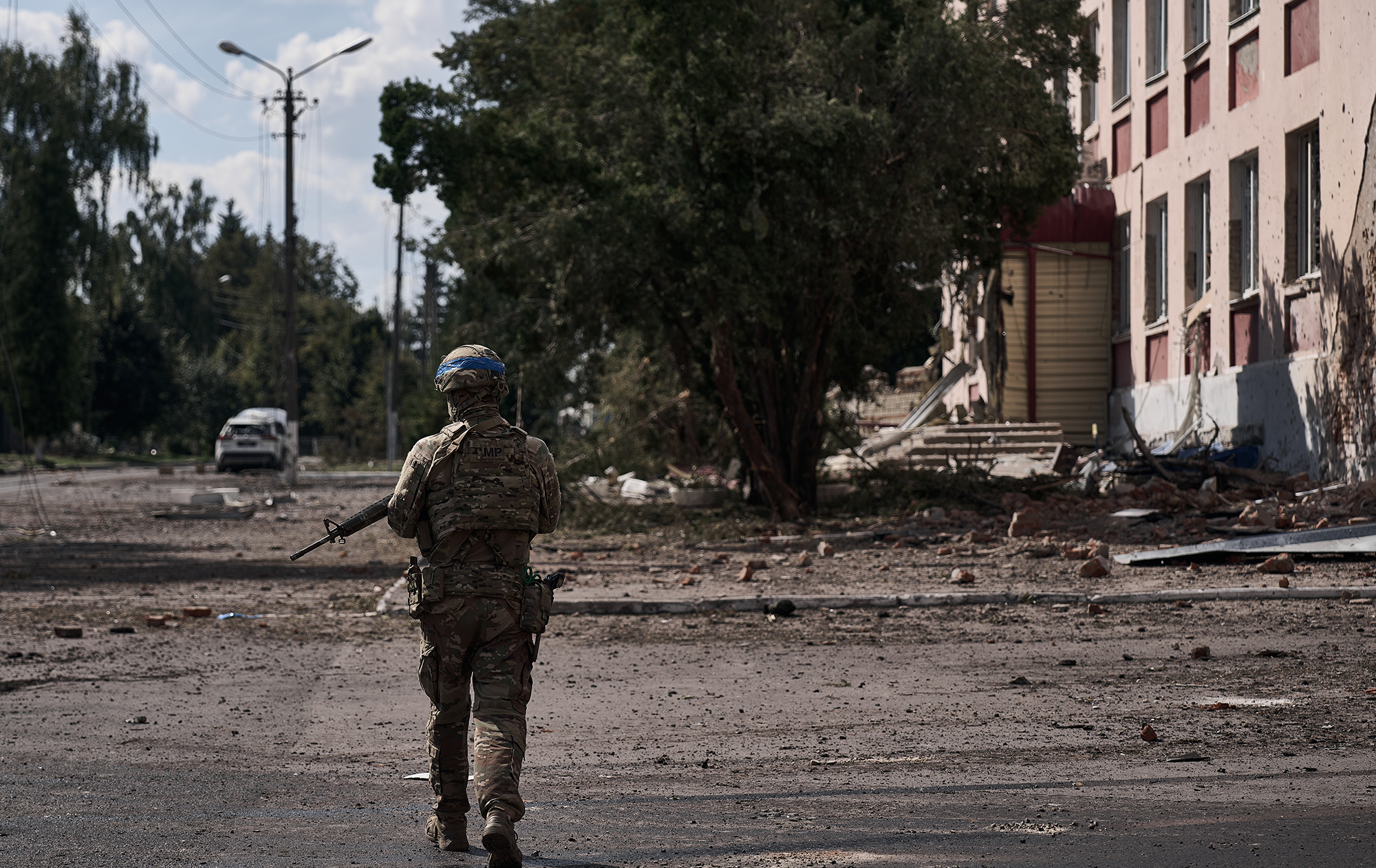 Ukrainian troops in the Kursk region prepare for a Russian counterattack (photo by Getty Images)
Ukrainian troops in the Kursk region prepare for a Russian counterattack (photo by Getty Images)
According to Seleznov, Russian troops are already trying to squeeze out the Ukrainian Defense Forces. “Sometimes they even have some success. So far, not so significant, at the tactical level” the source notes.
It is important to understand that the Ukrainian army is not in the Kursk region to keep it under control all the time. Officials have repeatedly said that this is not an occupation and that Ukraine does not need other people's lands.
“Next will be a maneuverable defense. Russia will suffer much greater losses when forced to attack our prepared lines. The Kursk offensive is a component of the 2024 defense operation,” Seleznov adds.
Another risk is associated with the Ukrainian East. The breakthrough into Russia's territory did not improve the situation on the front line—at least not yet. The Russian occupiers have captured many settlements in the Donetsk region, approached Toretsk, and are probably on the verge of the main battle of the fall—the battle for Pokrovsk.
Fears have grown after media reports that instead of reinforcing the outskirts, the Ukrainian army allegedly withdrew troops from the Donetsk direction for the sake of Kursk. According to Seleznov, these are not frontline units, but those that have undergone reconstruction.
Russia is actively storming towards Pokrovsk, but in recent days has stopped moving in a straight line and is trying to expand its flanks. It is likely to focus on this soon. As for what to expect in the Donbas in the fall, the source relies on the predictions of the head of military intelligence, Kyrylo Budanov. In early August, he said that the Russian offensive had long been delayed and could last for another month and a half or two.
“If his predictions come true, by early October the Russians will have no resources, they will be on the defensive, and a window of opportunity will open for us. How we use it depends on the help of our Western partners. Unfortunately, there is no particularly good news,” Seleznov says.
It is hard to say how long Pokrovsk can hold out. However, it is premature to talk about the threat of fighting in the neighboring Dnipropetrovsk region, Musiienko emphasizes. First, Ukrainian troops managed to counterattack in the area of Novohrodivka, which means that Russia will shift its focus south of Selydove. Secondly, the experience of the Russian-Ukrainian war shows that Russia does not conduct major operations without encompassing strikes, meaning that it will first try to go north through Myrnohrad. “And only then can there be a battle for Pokrovsk,” he adds.
What's next and whether it will be possible to negotiate with Russia
Ukraine intends to stay in the Kursk region until it forces Putin to the negotiating table, Zelenskyy says. According to him, this is an integral part of the new 4+1 plan, which will be presented to US President Joe Biden in September. It consists of five points - four basic and one post-war. Other details are unknown.
How much of the Ukrainian Defense Forces will be there depends on the arms supplies that have already been agreed upon. “If it is in Ukraine, we will keep it. But we will not keep it forever. We will be there as long as necessary for the whole plan,” he emphasizes, avoiding the question of whether Ukraine would try to take control of more territories.
 Ukraine intends to stay in the Kursk region until Putin agrees to negotiations (photo by Getty Images)
Ukraine intends to stay in the Kursk region until Putin agrees to negotiations (photo by Getty Images)
Vladyslav Seleznov is not conceited about offensive actions. These require resources, and according to some reports, the number of troops involved in the Kursk region reaches a maximum of 10-12 thousand.
“I don't think we should expect a march on Moscow. I think even Kursk is not in danger. But the maintenance of the buffer zone is obvious,” he says.
Musiienko draws attention to a part of Zelenskyy's interview with NBC News, where he said that he did not want to reveal all the cards, but that “the effect of surprise is success.” “This is very interesting. Perhaps additional actions are planned, and we will see them,” the expert adds.
It is possible that the breakthrough into the Kursk region is not the only surprise prepared for Russia.
“But, of course, we will find out about it after the fact. Although I am still convinced that the resource factor is the key. Commander-in-Chief Oleksander Syrskyi may have plans of any level of grandiosity. But without the necessary resources, everything will remain at the level of expectations,” Seleznov says.
Yesterday, Putin called the seizure of Donbas his primary goal. As for Kursk, he said, Ukraine was trying to stop the offensive in the Donetsk region and shake up the situation inside Russia, “but it didn't work.” And the basis for future peace talks should be the old draft of the Istanbul Agreement of 2022.
“Just the other day, the Western media wrote that Putin would never go to the negotiating track. The only possible option is Putin's physical disappearance and bringing Russia to a state in which it will not be able to wage war. I don't believe in a "black swan", the security system is too powerful around a dictator,” Seleznov summarizes.
Ukraine will not be able to cope with the task of depleting Russian troops on its own. Therefore, we need to convince our Western partners that their security depends on supplies for the Ukrainian Armed Forces. Perhaps today's meeting in the Ramstein format will be another step in this direction.
Sources: President Volodymyr Zelenskyy's interview with NBC News, analysis by the US Institute for the Study of War (ISW), and comments by military experts Vladyslav Seleznov and Oleksandr Musiienko.
